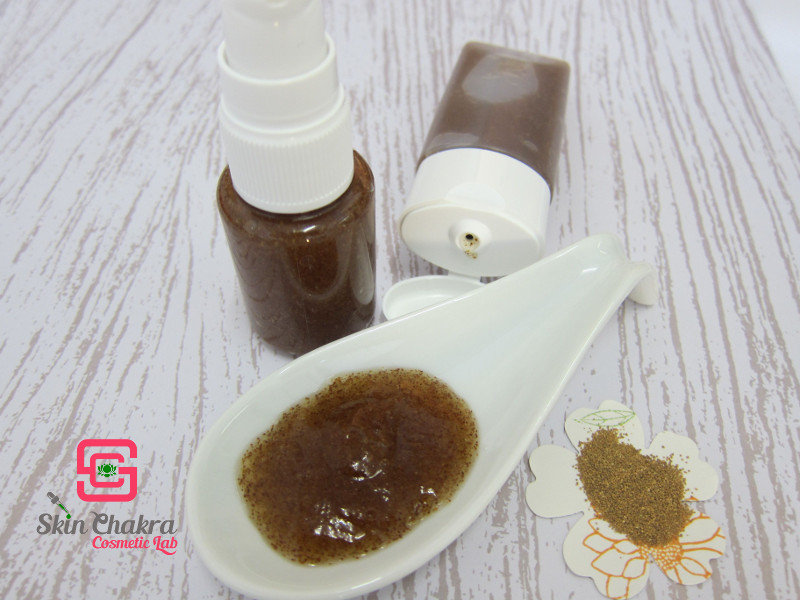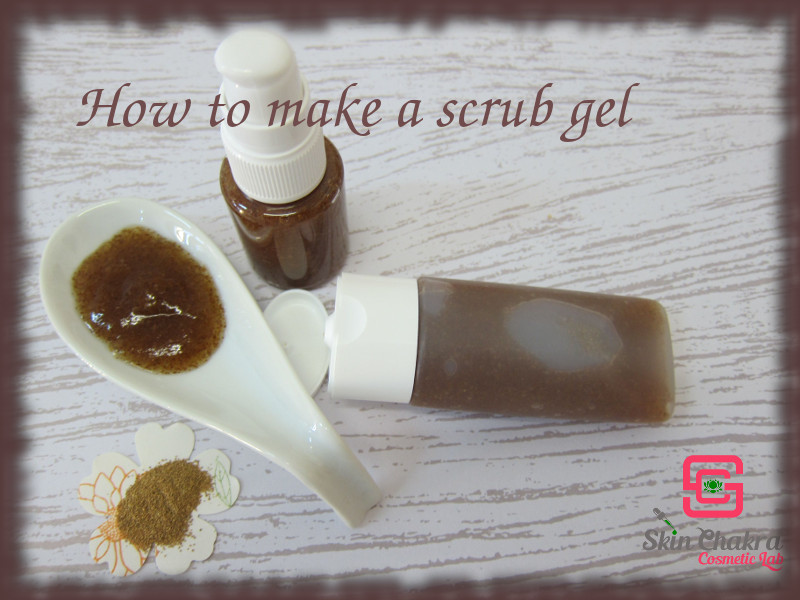Scrub gels belong to "classics" of personal care and are still one of the most widely applied forms of mechanical peeling.
When making a scrub you need to consider:
- compatibility of carrier and exfoliant (you can not use sugar or salt in a water based fomulation for instance)
- particle size of the exfoliant (apart from the exposure limits and toxicology of certain ingredients, the main factor whether you can use a certain scrub for face, body or hands & feet is the particle size of the exfoliant)
Keeping these factors in mind, the sky is your limit and you can create a variety of products in different forms and carriers.
When making a gel scrub, there is another factor that should be considered and that is the yield stress. Yield stress (which should be not mistaken with viscosity) is the factor that determines whether your exfoliant particles remain suspended in the carrier or whether they are going to sediment with time (and before the expiry date of the product).
This means, you don't necessarily need a high viscosity for your gel scrubs. You only need the right blend of gums to create the required yield stress so that your particles remain suspended.
Before we proceed to the formulation and procedure for this gel scrub I suggest that you go back to our previous blog posts:
How to improve the stability of your gel scrubs
Today's gel scrub is suitable for face and body. It's a citrussy scrub with apricot kernel powder as exfoliant with a nice skin feel and the uplifting scent of mandarine essential oil.

Formulation:
| Phase A |
|
| Lemon verbena hydrosol |
to 100,0% |
| Meadowsweet hydrosol |
30,0% |
| Sodium PCA |
2,0% |
| Natural chelator PA-3 |
0,1% |
| Aloe leaf powder 200:1 |
1,0% |
| Phase B |
|
| Solagum AX |
1,5% |
| Konjac gum |
0,4% |
| Sclerotium |
0,2% |
| Phase C |
|
| Coco glucoside |
5,0% |
| Proteol APL EF |
5,0% |
| Yucca extract |
1,0% |
| Plant based pentylene glycol |
3,0% |
| Mandarine essential oil |
0,5% |
| Phase D |
|
| Apricose kernel powder |
5,0% |
| Phase E |
|
| Natural preservative 1388 eco |
3,0% |
| Versatile preservative BL |
0,5% |
| Lactic acid 80,0% |
to adjust the pH |
Procedure:
1- Blend phase A,B,C in separate beakers. For phase C a magnetic stirrer would be very helpful but not necessary.
2- Disperse the gum phase (phase B) in phase A. An overhead mixer could be very helpful.
Read this blog post about gum dispersion:
3- When the gum is fully dispersed gently add the apricot kernel powder
4- When the surfactant phase (phase C) is blended into a homogeneous mixture, slowly add phase C to the gel. You don't want to create huge amounts of foam. Take your time for a slow dispersion.
5- From experience we know that this blend has a pH higher than 6 and we can add our preservatives. If you are using other ingredients and are not sure about the pH, measure it before adding your preservatives.
Preapare a 10% dispersion of the gel in distilled or deionized water and measure the pH. It should be above 5,3 as you add the preservative. If it is lower than 5,3 you can increase it by adding arginine.
6- Add the preservative. Prepare another 10% dispersion in water and remeasure the pH. In our case it didn't change a lot and we need to reduce the pH between 5,3-5,5. We do this by adding 80% lactic acid.
Our final pH is 5,4 and that is perfectly in range for our preservative system.
7- Take your stability and micro kit samples. Fill the rest in suitable containers. If you're using any pump dispensers for the product make sure your exgoliants do not clog the system. Tubes and screw cap bottles are usually a better choice than pump dispensers.
Enjoy the refreshing skin feel .
BeHappy and have fun



